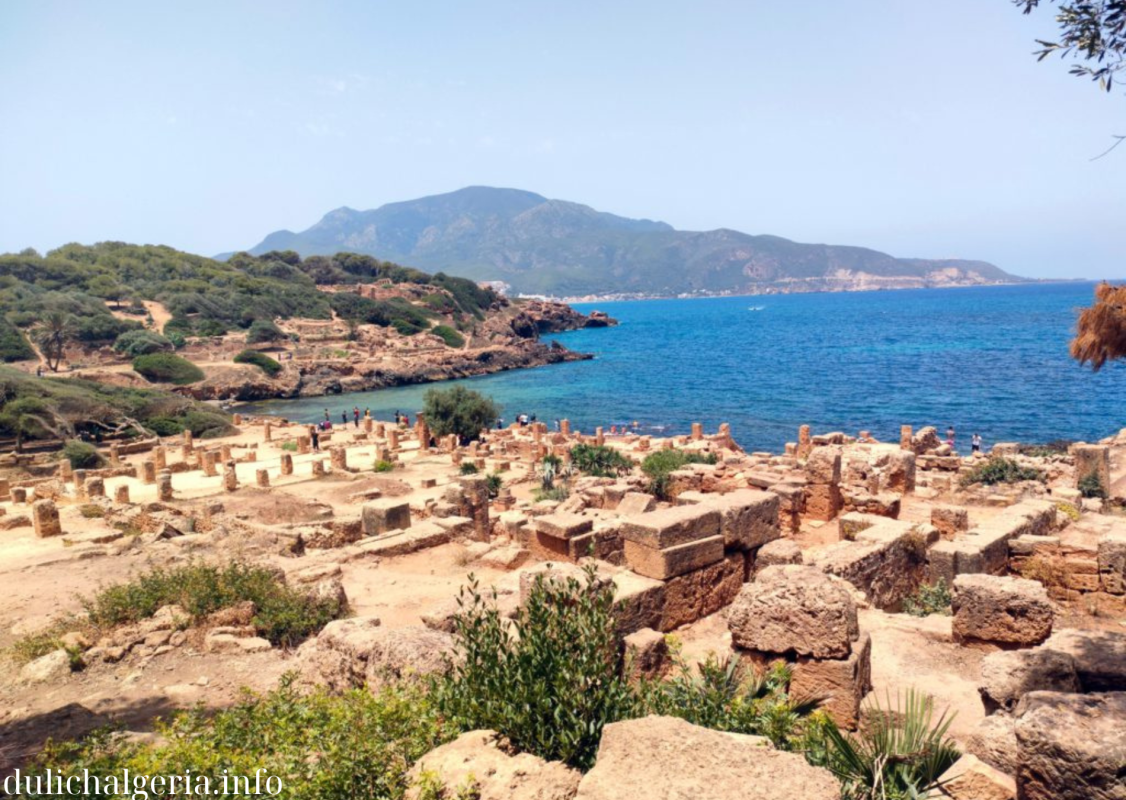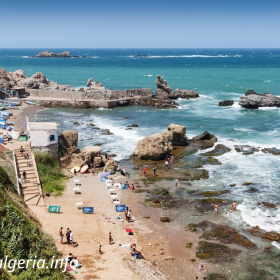Algeria, the largest country in Africa, is a treasure trove of historical and cultural wonders. Its UNESCO World Heritage Sites offer a glimpse into the rich history that has shaped this fascinating nation over millennia. From ancient Roman ruins to prehistoric rock art, each site tells a unique story of the civilizations that once thrived in this region. Embarking on a cultural journey through these sites provides a deep understanding of Algeria’s past and its enduring legacy.
The Roman Legacy in Algeria: Timgad and Djemila
Algeria is home to some of the most well-preserved Roman ruins outside of Italy, with Timgad and Djemila standing out as prime examples of Roman architectural and urban planning prowess.
Timgad: The Pompeii of Africa
Timgad, known as the “Pompeii of Africa,” is an exceptional example of Roman town planning. Founded by Emperor Trajan in AD 100, this city was designed as a military colony to protect the Roman Empire’s southern borders. The site’s layout is based on the classic Roman grid plan, with intersecting streets forming a perfect orthogonal grid. Visitors to Timgad can explore its triumphal arch, a well-preserved basilica, a library, and a vast forum, all of which reflect the grandeur of Roman architecture.
Djemila: A Blend of Roman and Berber Cultures
Djemila, another UNESCO World Heritage Site, offers a unique blend of Roman and Berber influences. Nestled in the mountains, this site showcases the adaptability of Roman architecture to different terrains. The city is renowned for its stunning mosaics, well-preserved temples, and basilicas. Walking through Djemila, one can sense the harmonious coexistence of Roman and indigenous cultures, making it a truly unique historical site.
The Mysteries of Prehistoric Rock Art: Tassili n’Ajjer
Moving from the Roman era to prehistoric times, the Tassili n’Ajjer is a vast plateau in the Sahara Desert, home to one of the most significant collections of prehistoric rock art in the world. The site contains thousands of cave paintings and engravings that date back over 10,000 years, depicting scenes of daily life, including hunting, dancing, and animal domestication.
Tassili n’Ajjer: A Window into Prehistoric Africa
The rock art of Tassili n’Ajjer provides invaluable insights into the lives of prehistoric peoples and the changing environment of the Sahara. The detailed depictions of animals such as elephants, giraffes, and crocodiles suggest a time when the Sahara was a lush, fertile region, contrasting sharply with its current arid state. The artwork also highlights the spiritual and social aspects of these ancient communities, offering a rare glimpse into the prehistoric African past.
Islamic and Berber Heritage: The Casbah of Algiers
The Casbah of Algiers is a testament to Algeria’s rich Islamic and Berber heritage. This historic medina, perched on a hill overlooking the Mediterranean Sea, is a maze of narrow streets, traditional houses, and ancient mosques. The Casbah has been a center of cultural and political activity for centuries, playing a crucial role during the Algerian War of Independence.
The Casbah: Heart of Algiers
The Casbah is not just a historical site but a living, breathing part of Algiers. Its labyrinthine alleys and bustling markets offer a vibrant atmosphere, where the past and present coexist. Visitors can explore the 16th-century Ketchaoua Mosque, the remains of the ancient citadel, and the traditional Ottoman-style houses that line the streets. The Casbah’s significance as a cultural and historical hub led to its designation as a UNESCO World Heritage Site in 1992.
Algeria’s Unique Cultural Landscapes: M’Zab Valley
The M’Zab Valley, located in the northern Sahara, is a striking example of a traditional human settlement adapted to the harsh desert environment. The valley is home to five fortified towns, known as ksour, built by the Ibadis, a Berber Muslim community, in the 10th century. These towns, with their unique architecture and urban planning, have remained virtually unchanged for over a millennium.
M’Zab Valley: A Model of Sustainable Living
The architecture of the M’Zab Valley reflects a deep understanding of the desert environment. The towns are characterized by their compact, multi-story houses built from local materials, designed to keep the interiors cool in the scorching heat. The valley’s sustainable approach to water management, through the use of wells and ingenious irrigation systems, has allowed this community to thrive in one of the most challenging environments on earth.
A Timeless Journey Through Algeria’s World Heritage Sites
Exploring Algeria’s UNESCO World Heritage Sites is like stepping back in time. Each site offers a unique perspective on the country’s diverse history, from the ancient Roman cities of Timgad and Djemila to the prehistoric rock art of Tassili n’Ajjer, the Islamic heritage of the Casbah of Algiers, and the unique cultural landscapes of the M’Zab Valley. Together, these sites weave a rich tapestry of Algeria’s past, providing a deeper understanding of its cultural heritage and the enduring legacy of the civilizations that once thrived here.
Conclusion
Algeria’s UNESCO World Heritage Sites are more than just historical landmarks; they are gateways to understanding the complex and rich history of a nation at the crossroads of different civilizations. Whether you’re a history enthusiast, a cultural explorer, or simply looking to experience the beauty of ancient architecture and art, a journey through these sites will leave you with a profound appreciation of Algeria’s cultural heritage. As you explore the ruins of ancient Roman cities, the mystical rock art of the Sahara, the vibrant streets of the Casbah, and the timeless towns of the M’Zab Valley, you’ll embark on a cultural journey that connects you to the very heart of Algeria’s history.
FAQ
What are the most famous UNESCO World Heritage Sites in Algeria?
Some of the most renowned UNESCO World Heritage Sites in Algeria include the Roman ruins of Timgad and Djemila, the prehistoric rock art of Tassili n’Ajjer, the Casbah of Algiers, and the M’Zab Valley.
Why is Timgad referred to as the “Pompeii of Africa”?
Timgad is called the “Pompeii of Africa” because of its remarkably well-preserved Roman ruins, which provide a clear example of Roman town planning and architecture.
What makes the rock art of Tassili n’Ajjer significant?
The rock art of Tassili n’Ajjer is significant because it provides a window into prehistoric life in the Sahara, depicting scenes of daily activities and the region’s ancient environment.
How has the M’Zab Valley adapted to the desert environment?
The M’Zab Valley’s architecture and urban planning reflect a deep understanding of the desert environment, with compact, cool houses and advanced water management systems that have allowed the community to thrive for centuries.
What role did the Casbah of Algiers play in Algeria’s history?
The Casbah of Algiers has been a center of cultural and political activity for centuries, playing a crucial role during the Algerian War of Independence and serving as a living testament to Algeria’s Islamic and Berber heritage.

